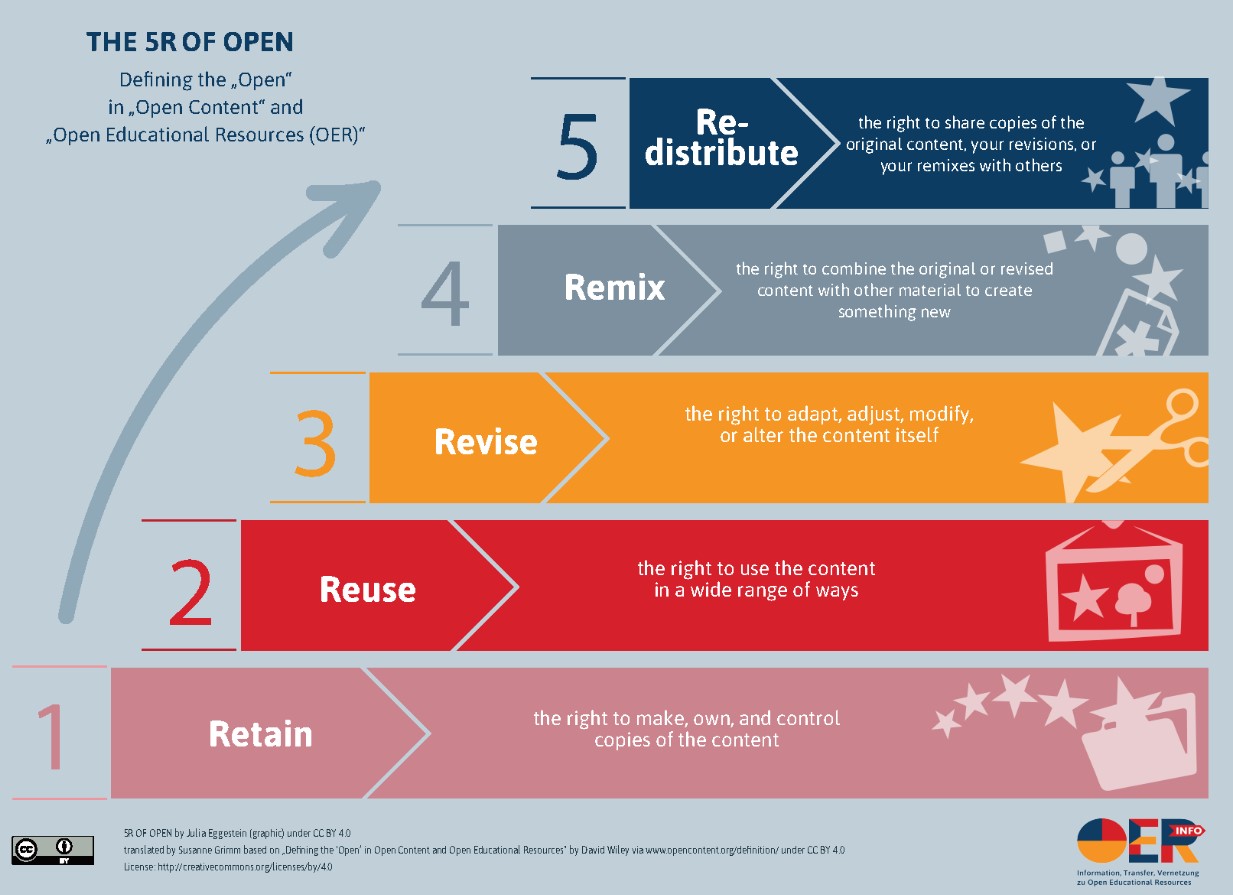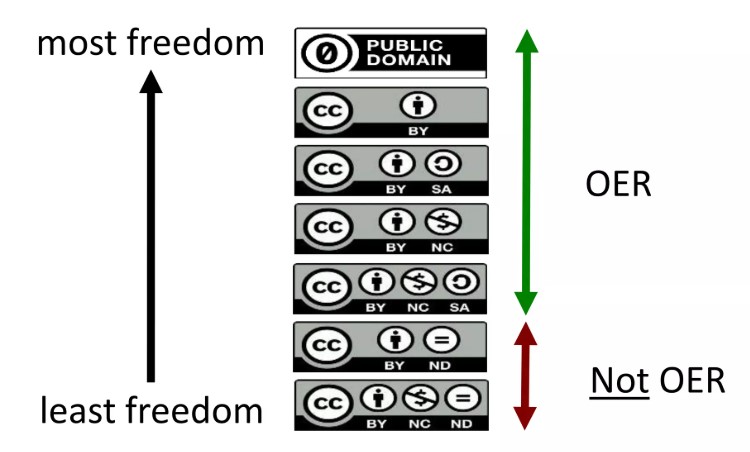William Perrenod
What are Open Educational Resources (OER)?
It’s important to note that there are multiple definitions of OER, but they consistently emphasize the ideas of open access, flexible usage, and permissions to modify and share educational content. The US Department of Education’s Office of Education Technology “defines open educational resources (OER) as teaching, learning, and research resources that reside in the public domain or have been released under a license that permits their free use, reuse, modification, and sharing with others. Digital openly licensed resources can include complete online courses, modular digital textbooks as well as more granular resources such as images, videos, and assessment items.”[1]
The 5Rs OER framework refers to the key activities that OER materials allow users to engage in, as defined by Creative Commons. This framework encourages the flexible, collaborative, and creative use of educational materials.

Enlarge the image click here
The term “open educational resources” describes any copyrightable work (traditionally excluding software, which is described by other terms like “open source”) that is either (1) in the public domain or (2) licensed in a manner that provides everyone with free and perpetual permission to engage in the 5R activities above.[2]
OER encompasses a wide range of formats and sizes. They can be as concise as a single video, or they can be as comprehensive as an entire degree program. The diversity of OER showcases their versatility and effectiveness in education.
The easiest way to confirm that an education resource is an *open* educational resource that provides you with the 5R permissions is to determine that the resource is either in the public domain or has been licensed under a Creative Commons license or tool that permits the creation of derivative works – CC0, the Public Domain Mark, CC BY, CC BY-SA, CC BY-NC, or CC BY-NC-SA.[3]

Image License: Webinar 2: Open Licensing & Copyright in Education, Dr. Cable Green, https://www.slideshare.net/slideshow/webinar-2-open-licensing-copyright-in-education-81566013/81566013 CC BY 4.0
In summary, “open educational resources” (OER) refers to any copyrightable work, excluding software. OER can either be in the public domain or licensed in a way that allows free, perpetual use and modification, as illustrated by the 5R framework. These resources can range from simple items to comprehensive materials, showcasing their flexibility in education. To confirm that a resource is OER, check if it’s in the public domain or licensed with tools like Creative Commons licenses that permit derivative works, such as CC0, CC BY, or CC BY-SA.
Test your knowledge
Developed by William Perrenod and licensed under CC BY 4.0
- Open educational resources. (n.d.). New York State Education Department. Retrieved February 18, 2025, from https://www.nysed.gov/edtech/open-educational-resources ↵
- Defining the “open” in open content and open educational resources – improving learning. (n.d.). Retrieved February 18, 2025, from https://opencontent.org/definition ↵
- 5. 2 oer, open textbooks, and open courses | creative commons certificate for educators, academic librarians, and open culture. (n.d.). Retrieved February 18, 2025, from https://certificates.creativecommons.org/cccertedu/chapter/6-2-oer-open-textbooks-open-courses/ CCBY ↵
